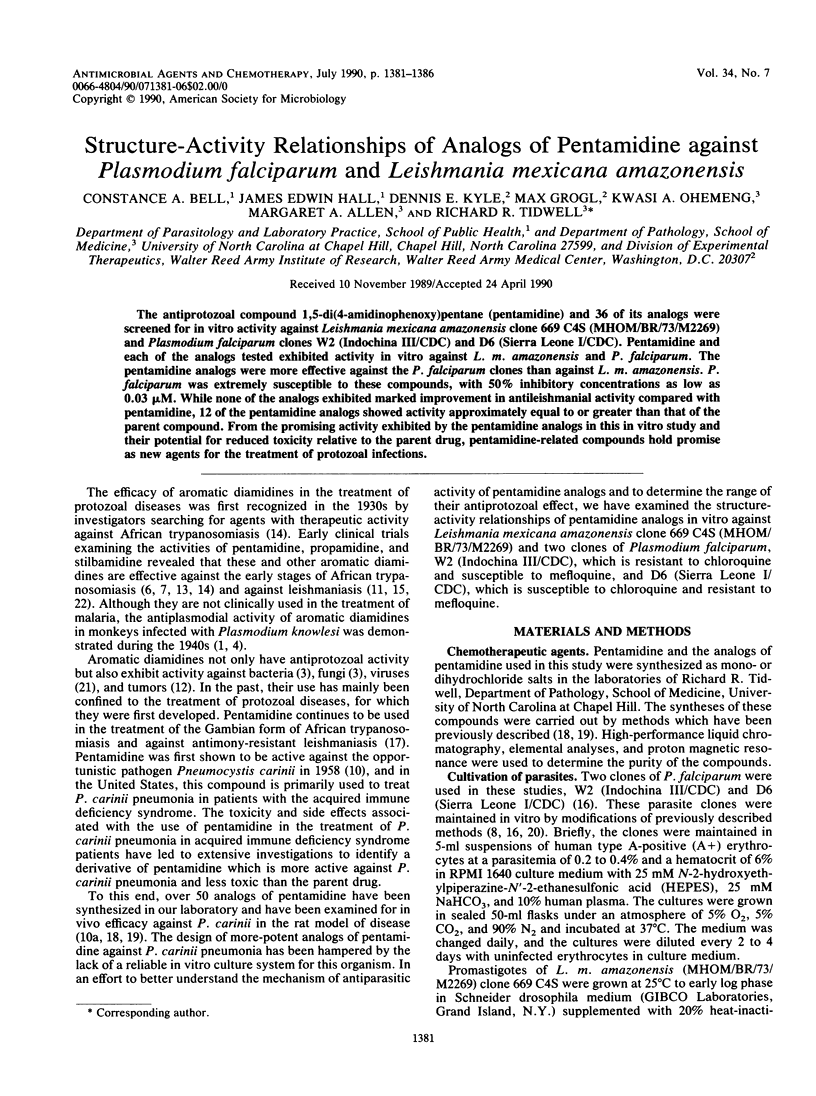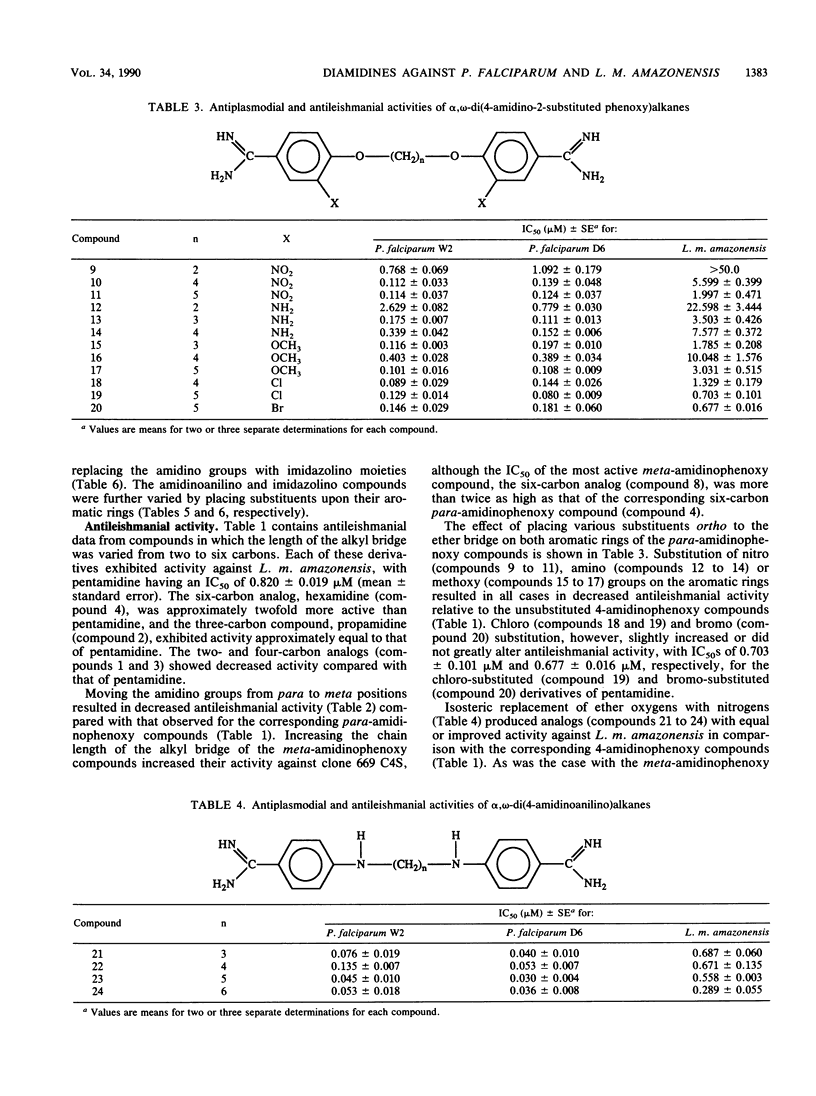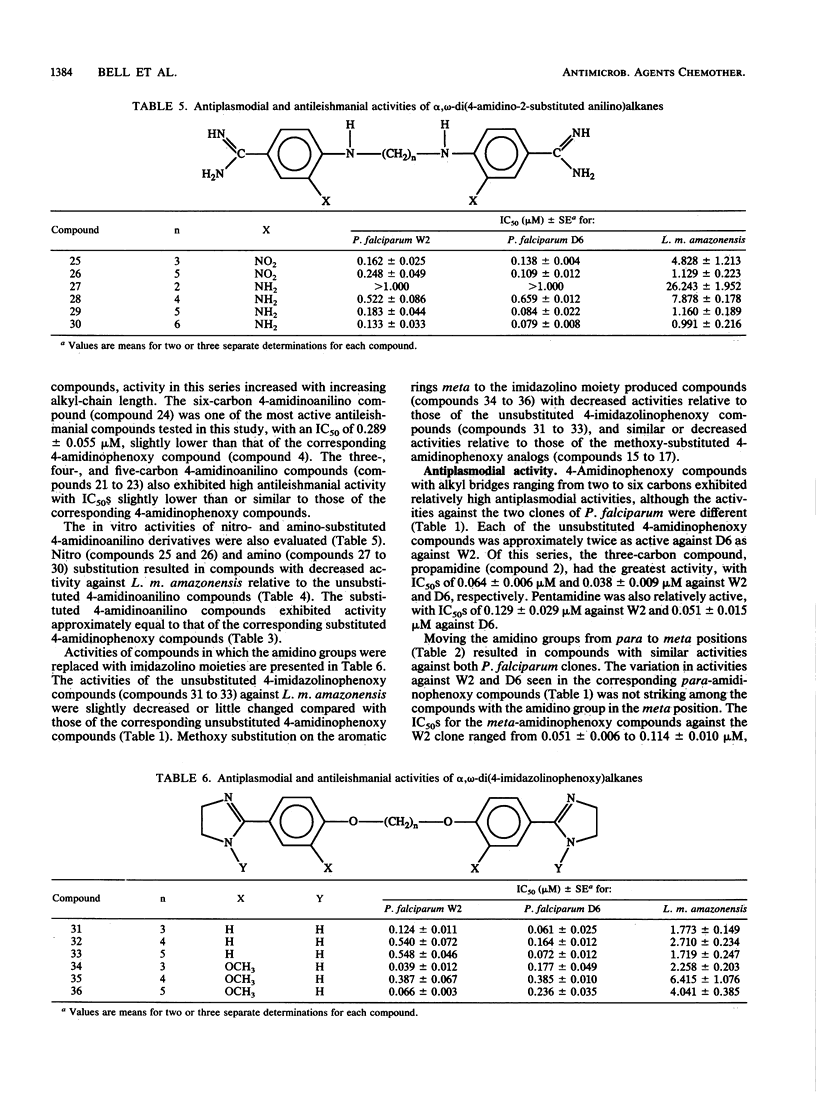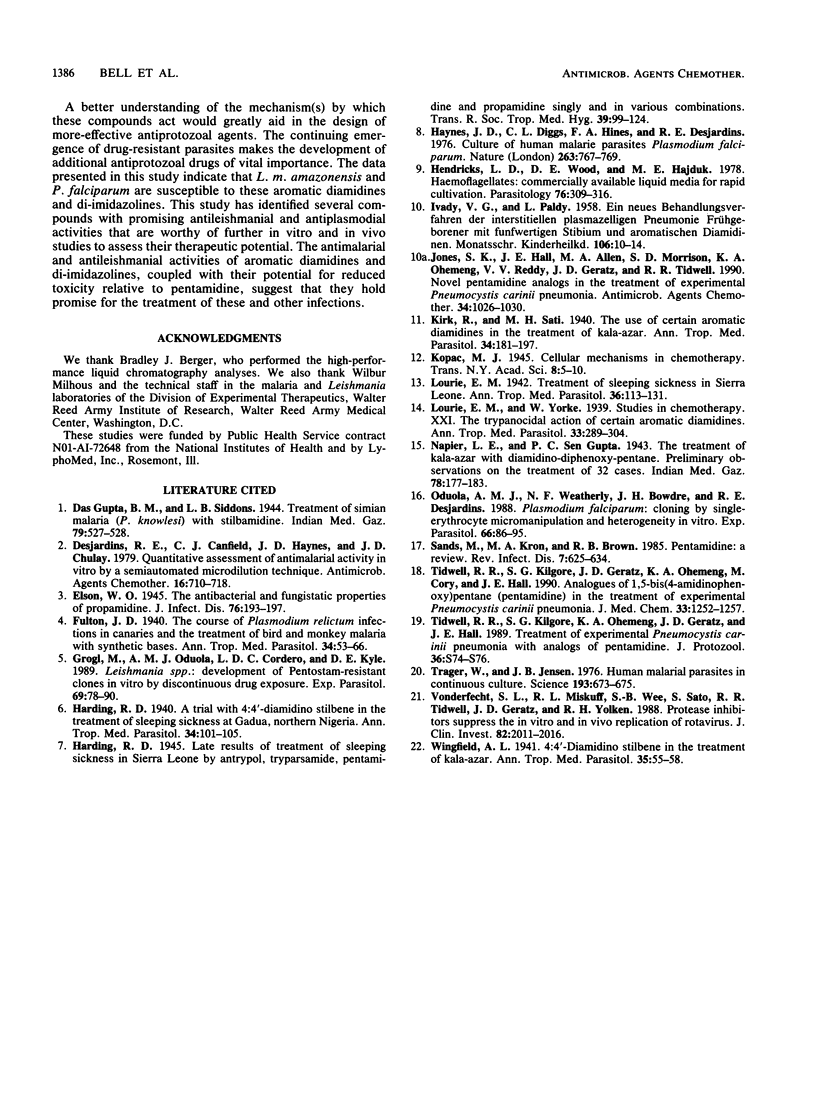Abstract
The antiprotozoal compound 1,5-di(4-amidinophenoxy)pentane (pentamidine) and 36 of its analogs were screened for in vitro activity against Leishmania mexicana amazonensis clone 669 C4S (MHOM/BR/73/M2269) and Plasmodium falciparum clones W2 (Indochina III/CDC) and D6 (Sierra Leone I/CDC). Pentamidine and each of the analogs tested exhibited activity in vitro against L. m. amazonensis and P. falciparum. The pentamidine analogs were more effective against the P. falciparum clones than against L. m. amazonensis. P. falciparum was extremely susceptible to these compounds, with 50% inhibitory concentrations as low as 0.03 microM. While none of the analogs exhibited marked improvement in antileishmanial activity compared with pentamidine, 12 of the pentamidine analogs showed activity approximately equal to or greater than that of the parent compound. From the promising activity exhibited by the pentamidine analogs in this in vitro study and their potential for reduced toxicity relative to the parent drug, pentamidine-related compounds hold promise as new agents for the treatment of protozoal infections.
Full text
PDF





Selected References
These references are in PubMed. This may not be the complete list of references from this article.
- Desjardins R. E., Canfield C. J., Haynes J. D., Chulay J. D. Quantitative assessment of antimalarial activity in vitro by a semiautomated microdilution technique. Antimicrob Agents Chemother. 1979 Dec;16(6):710–718. doi: 10.1128/aac.16.6.710. [DOI] [PMC free article] [PubMed] [Google Scholar]
- Grögl M., Oduola A. M., Cordero L. D., Kyle D. E. Leishmania spp.: development of pentostam-resistant clones in vitro by discontinuous drug exposure. Exp Parasitol. 1989 Jul;69(1):78–90. doi: 10.1016/0014-4894(89)90173-2. [DOI] [PubMed] [Google Scholar]
- Haynes J. D., Diggs C. L., Hines F. A., Desjardins R. E. Culture of human malaria parasites Plasmodium falciparum. Nature. 1976 Oct 28;263(5580):767–769. doi: 10.1038/263767a0. [DOI] [PubMed] [Google Scholar]
- Hendricks L. D., Wood D. E., Hajduk M. E. Haemoflagellates: commercially available liquid media for rapid cultivation. Parasitology. 1978 Jun;76(3):309–316. doi: 10.1017/s0031182000048186. [DOI] [PubMed] [Google Scholar]
- IVADY G., PALDY L. Ein neues Behandlungsverfahren der interstitiellen plasmazelligen Pneumonie Frühgeborener mit fünfwertigem Stibium und aromatischen Diamidinen. Monatsschr Kinderheilkd. 1958 Jan;106(1):10–14. [PubMed] [Google Scholar]
- Jones S. K., Hall J. E., Allen M. A., Morrison S. D., Ohemeng K. A., Reddy V. V., Geratz J. D., Tidwell R. R. Novel pentamidine analogs in the treatment of experimental Pneumocystis carinii pneumonia. Antimicrob Agents Chemother. 1990 Jun;34(6):1026–1030. doi: 10.1128/aac.34.6.1026. [DOI] [PMC free article] [PubMed] [Google Scholar]
- Oduola A. M., Weatherly N. F., Bowdre J. H., Desjardins R. E. Plasmodium falciparum: cloning by single-erythrocyte micromanipulation and heterogeneity in vitro. Exp Parasitol. 1988 Jun;66(1):86–95. doi: 10.1016/0014-4894(88)90053-7. [DOI] [PubMed] [Google Scholar]
- Sands M., Kron M. A., Brown R. B. Pentamidine: a review. Rev Infect Dis. 1985 Sep-Oct;7(5):625–634. doi: 10.1093/clinids/7.5.625. [DOI] [PubMed] [Google Scholar]
- Tidwell R. R., Jones S. K., Geratz J. D., Ohemeng K. A., Cory M., Hall J. E. Analogues of 1,5-bis(4-amidinophenoxy)pentane (pentamidine) in the treatment of experimental Pneumocystis carinii pneumonia. J Med Chem. 1990 Apr;33(4):1252–1257. doi: 10.1021/jm00166a026. [DOI] [PubMed] [Google Scholar]
- Trager W., Jensen J. B. Human malaria parasites in continuous culture. Science. 1976 Aug 20;193(4254):673–675. doi: 10.1126/science.781840. [DOI] [PubMed] [Google Scholar]
- Vonderfecht S. L., Miskuff R. L., Wee S. B., Sato S., Tidwell R. R., Geratz J. D., Yolken R. H. Protease inhibitors suppress the in vitro and in vivo replication of rotavirus. J Clin Invest. 1988 Dec;82(6):2011–2016. doi: 10.1172/JCI113821. [DOI] [PMC free article] [PubMed] [Google Scholar]


